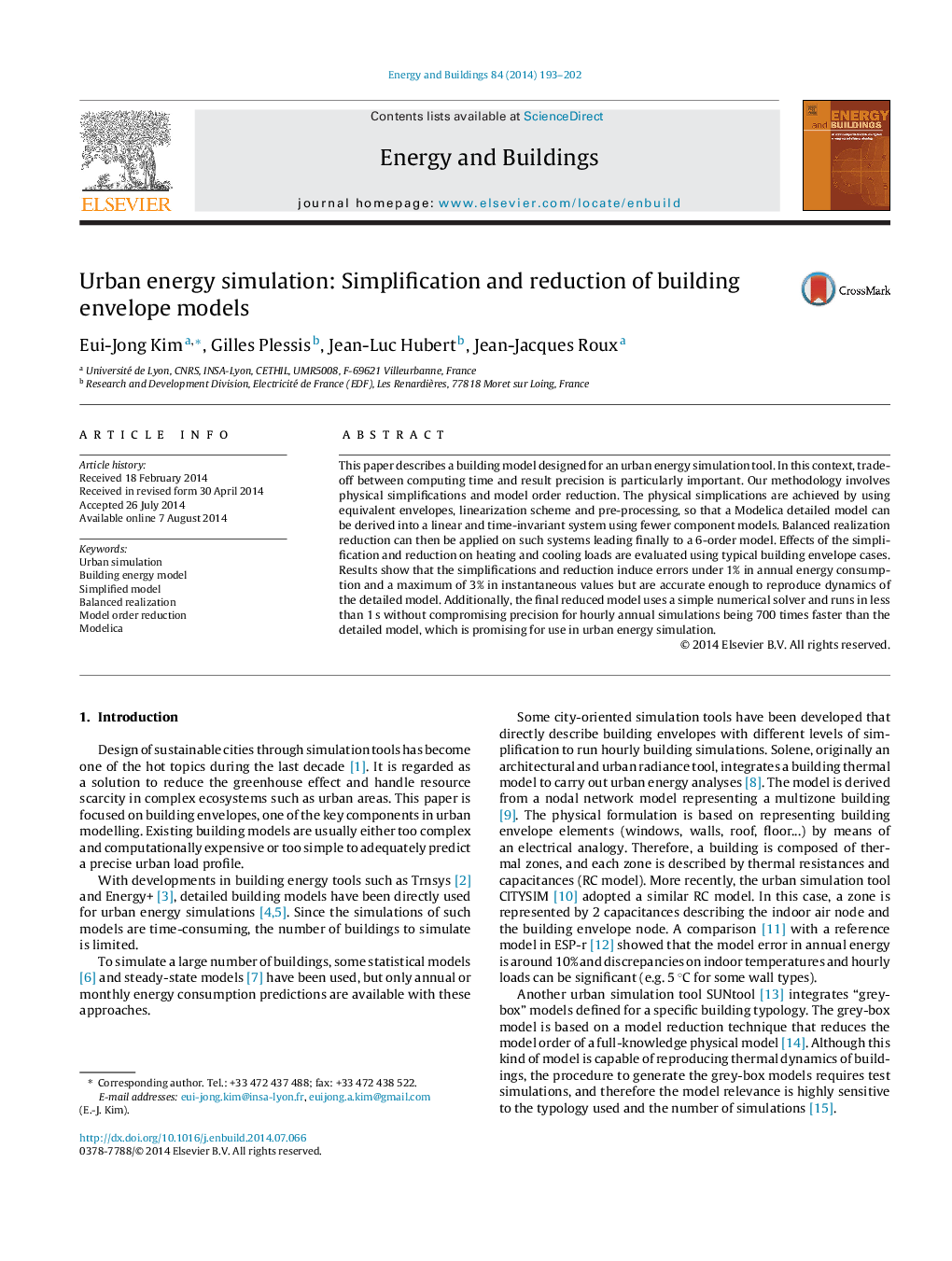| Article ID | Journal | Published Year | Pages | File Type |
|---|---|---|---|---|
| 262871 | Energy and Buildings | 2014 | 10 Pages |
•Simplifications and reduction of detailed building model are proposed.•Equivalent building envelopes and area-weighted solar irradiance are applied.•Some non-linear parts are pre-processed to get a linear and time-invariant model.
This paper describes a building model designed for an urban energy simulation tool. In this context, trade-off between computing time and result precision is particularly important. Our methodology involves physical simplifications and model order reduction. The physical simplications are achieved by using equivalent envelopes, linearization scheme and pre-processing, so that a Modelica detailed model can be derived into a linear and time-invariant system using fewer component models. Balanced realization reduction can then be applied on such systems leading finally to a 6-order model. Effects of the simplification and reduction on heating and cooling loads are evaluated using typical building envelope cases. Results show that the simplifications and reduction induce errors under 1% in annual energy consumption and a maximum of 3% in instantaneous values but are accurate enough to reproduce dynamics of the detailed model. Additionally, the final reduced model uses a simple numerical solver and runs in less than 1 s without compromising precision for hourly annual simulations being 700 times faster than the detailed model, which is promising for use in urban energy simulation.
